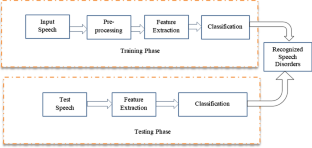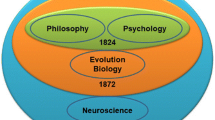Abstract
Speech disorder refers to the situation that affects the ability of a person to produce sounds that generates words. People of any age can be affected by speech disorders. Speech disorders symptoms varies broadly contingent on the cause and the disorder severity. Multiple speech disorders can be developed in the people with different symptoms. Approximately one-fifth of theworld’s population suffer or have suffered from voice and speech production disorders due to diseases or some other dysfunction. Thus, there is a clear need for objective ways to evaluate the quality of voice and speech as well as its link to vocal fold activity, to evaluate the complex interaction between the larynx and voluntary movements of the articulators (i.e., lips, teeth, tongue, velum, jaw, etc.), or to evaluate disfluencies at the language level. With advances in speech signal processing and natural language processing, there has been recent interest in developing tools to detect more subtle changes in cognitive-linguistic function. This paper discusses on various speech disorders in children and adults such as apraxia, stuttering, voice disorders involving the larynx, Aphasia and dysarthria. This paper also presents a survey on different methods used for processing speech disorders.

Similar content being viewed by others
Data Availability
The data used to support the finding of this study are included within the article.
References
Shahin, M., Zafar, U., & Ahmed, B. (2020). The Automatic Detection of Speech Disorders in Children: Challenges, Opportunities, and Preliminary Results. IEEE Journal of Selected Topics in Signal Processing, 14(2), 400–412. https://doi.org/10.1109/JSTSP.2019.2959393
Alharbi S., Hasan M., Simons A.J.H., Brumfitt S., Green P. (2017) Detecting Stuttering Events in Transcripts of Children’s Speech. In: Camelin N., Estève Y., Martín-Vide C. (eds) Statistical Language and Speech Processing. SLSP 2017. Lecture Notes in Computer Science, vol 10583. Springer, Cham
Sadeen,A, Hasan, M, Simons, A, Brumfitt, S, Green, P (2018). A Lightly Supervised Approach to Detect Stuttering in Children's Speech. 3433–3437. https://doi.org/10.21437/Interspeech.2018-2155.
Smith, D, Sneddon, A, Ward, L, Duenser, A, Freyne, J, Silvera-Tawil, D, Morgan, A (2017). Improving Child Speech Disorder Assessment by Incorporating Out-of-Domain Adult Speech. 2690–2694. https://doi.org/10.21437/Interspeech.2017-455.
Kothalkar, P. V., Rudolph, J., Dollaghan, C., McGlothlin, J., Campbell, T. F., Hansen, J. H. L., Automatic Screening to Detect ’At Risk’ Child Speech Samples using a Clinical Group Verification framework*. (2018). 40th Annual International Conference of the IEEE Engineering in Medicine and Biology Society (EMBC). Honolulu, HI, 2018, 4909–4913.
Hanani, A., Attari, M., Farakhna, A., Joma'A, A., Hussein, M., Taylor, S. (2016) Automatic Identification of Articulation Disorders for Arabic Children Speakers. Proc. Workshop on Child Computer Interaction, 35–39.
Vikram, C., Tripathi, A., Kalita, S., Prasanna,SM. (2018) "Estimation of hypernasality scores from cleft lip and palate speech", Proc. Interspeech, 1701–1705
Sell, Gregory & Garcia-Romero, Daniel. (2015). Speaker diarization with plda i-vector scoring and unsupervised calibration. 2014 IEEE Workshop on Spoken Language Technology, SLT 2014 - Proceedings. 413–417. https://doi.org/10.1109/SLT.2014.7078610.
Wang, X., Du, J., Sun, L., Wang, Q., Lee, C., A Progressive Deep Learning Approach to Child Speech Separation. (2018). 11th International Symposium on Chinese Spoken Language Processing (ISCSLP). Taipei City, Taiwan, 2018, 76–80.
Shahin, M., Gutierrez-Osuna, R., Ahmed, B. 2016 IEEE International Conference on Acoustics, Speech and Signal Processing (ICASSP), Shanghai, 2016 6480–6484.
Teshaboyeva, G. (2020). Speech defects in young children and ways to overcome them. ACADEMICIA International Multidisciplinary Research Journal, 10(6), 1761–1767.
Ruksenaite, J., Volkmer, A., Jiang, J., Johnson, J. C., Marshall, C. R., Warren, J. D., & Hardy, C. J. (2021). Primary progressive Aphasia: Toward a pathophysiological synthesis. Current Neurology and Neuroscience Reports, 21(3), 1–2.
Zhang, Z., Xu, Q., Joshi, R.M. (2020) A meta‐analysis on the effectiveness of intervention in children with primary speech and language delays/disorders: focusing on China and the United States. Clin. Psychol. Psychother
Horton, R (2020) Systems-based approaches to speech-language pathology service delivery for school age children. In: Cases on Communication Disorders in Culturally Diverse Populations, pp. 113–136. IGI Global
Rumbach, A. F., Clayton, N. A., Muller, M. J., & Maitz, P. K. (2016). The speech-language pathologist’s role in multidisciplinary burn care: An international perspective. Burns, 42(4), 863–871.
Jothi, K., Sivaraju, S., Yawalkar, P (2021) AI-based speech-language therapy using speech quality parameters for aphasia person: a comprehensive review. In: 4th International Conference on Electronics, Communication and Aerospace Technology (ICECA), 5382 -5392
Kohlschein, C., Schmitt, M., Schuller, B., Jeschke, S., Werner, C (2017) A machine learning-based system for the automatic evaluation of aphasia speech. In: IEEE 19th International Conference on e-Health Networking, Applications and Services (Healthcom)
Gasparetti, F., De Medio, C., Limongelli, C., Sciarrone, F., & Temperini, M. (2018). Prerequisites between learning objects: Automatic extraction based on a machine learning approach. Telematics and Informatics,35(3), 595–610.
Aishwarya, J., Kundapur, P., Kumar, S., Hareesha, K.S (2018) Kannada speech recognition system for Aphasic people. In: International Conference on Advances in Computing, Communications, and Informatics (ICACCI), 1753–1756
Briffa, C., & Porter, J. (2013). A systematic review of the collaborative clinical education model to inform speech-language pathology practice. International Journal of Speech-Language Pathology, 15(6), 564–574.
Acknowledgements
We, the authors of the paper titled “A Review on Speech Disorders and Processing of Disordered Speech” hereby declare that the work included in the above paper is original and is an outcome of the research carried out by the authors indicated in it. Further, we declare that the work submitted has not been published already or under consideration for publication in any Journals/Conferences/Symposia/Seminars. We also declare that the work does not infringe on any copyrights, property rights of others including licences and it is free from plagiarism. The authors hereby assign all copyright rights of the paper to Springer.
Funding
This work is not funded by any governmental or non-governmental funding agencies.
Author information
Authors and Affiliations
Corresponding author
Ethics declarations
Conflict of interest
The authors declare that they have NO affiliations with or involvement in any organization or entity with any financial interest (such as honoraria; educational grants; participation in speakers’ bureaus; membership, employment, consultancies, stock ownership, or other equity interest; and expert testimony or patent-licensing arrangements), or non-financial interest (such as personal or professional relationships, affiliations, knowledge or beliefs) in the subject matter or materials discussed in this manuscript.
Additional information
Publisher's Note
Springer Nature remains neutral with regard to jurisdictional claims in published maps and institutional affiliations.
Rights and permissions
About this article
Cite this article
Anthony, A.A., Patil, C.M. & Basavaiah, J. A Review on Speech Disorders and Processing of Disordered Speech. Wireless Pers Commun 126, 1621–1631 (2022). https://doi.org/10.1007/s11277-022-09812-w
Accepted:
Published:
Issue Date:
DOI: https://doi.org/10.1007/s11277-022-09812-w




